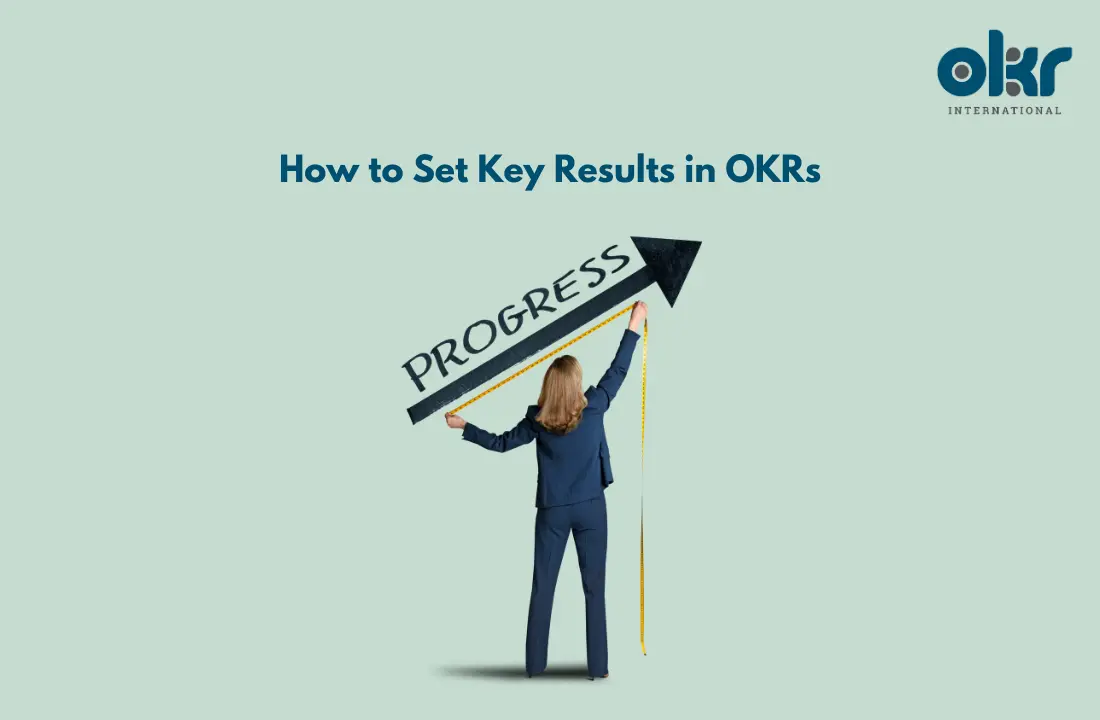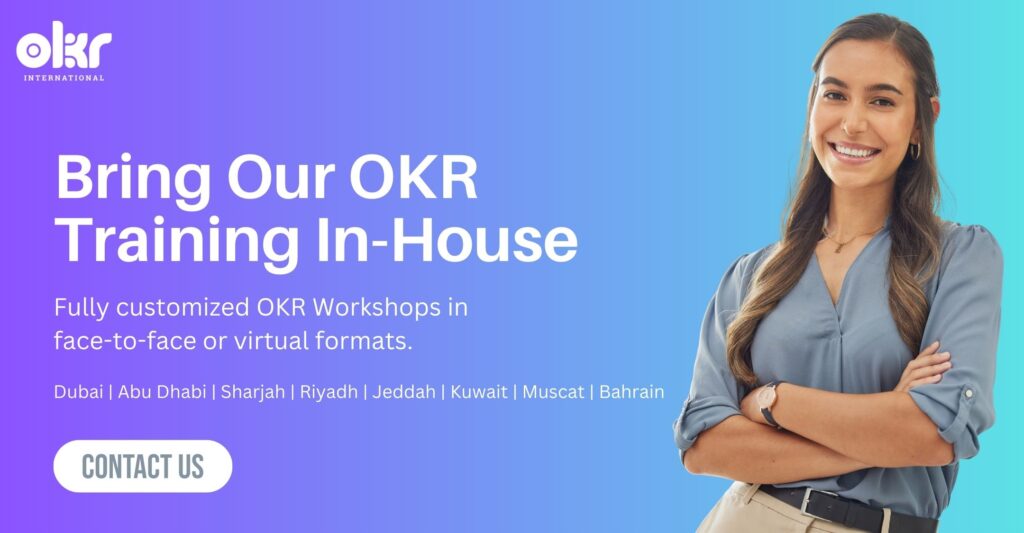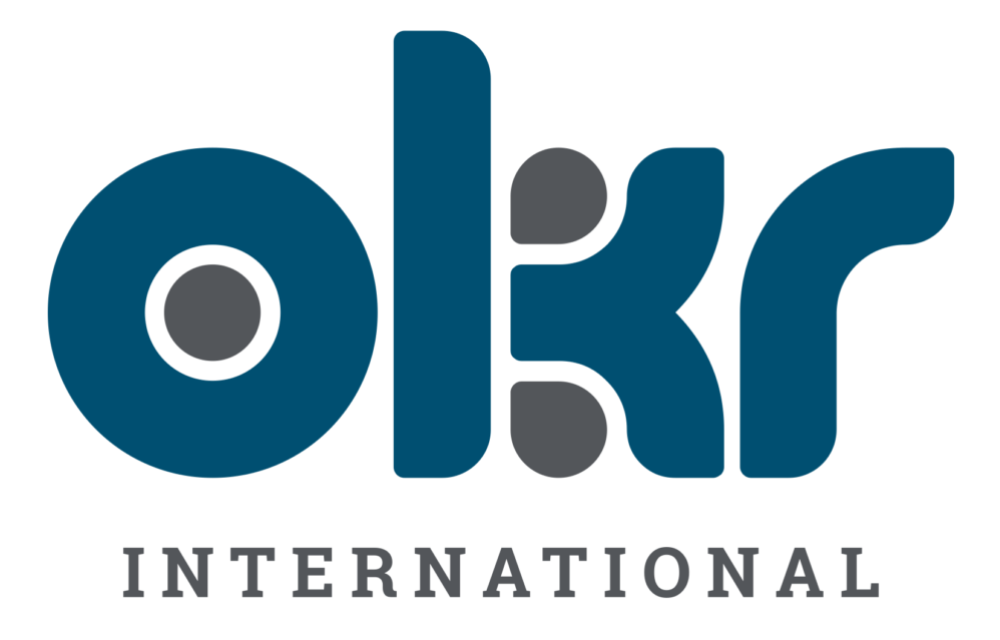How to Set Key Results in OKRs
Creating Measurable Outcomes that Track Progress
In the framework of Objectives and Key Results (OKRs), setting key results is an essential component that ensures progress toward objectives is measurable and trackable. Effective key results provide a clear metric of success, guiding teams toward achieving their objectives. This blog post will explore the importance of key results, the distinction between outcome-oriented and output-oriented key results, and practical tips for creating them at different organizational levels.
Understanding Key Results
Key results are the specific, measurable outcomes that indicate progress toward achieving an objective. They provide the tangible evidence needed to assess whether objectives are being met. Effective key results should be specific, measurable, attainable, relevant, and time-bound. It is critical to note that many teams fall into the trap of what we, at OKR International, like to call – Reverse Engineering OKRs. This means you already have existing Key Results you are working on (most likely a KPI converted to a KR) and now to look for a suitable Objective to fit it. While this seems an easy way out in the process of OKR Planning, beware that you might be giving up on any or all levels of innovation possible. Ergo, it is best to start the planning and alignment of OKRs with Objectives first, Key Results follow the objective and Initiatives are what give you the key result.
Characteristics of Strong Key Results
1. Specificity:
A strong key result is precise and clearly defined. It specifies the exact outcome that needs to be achieved, leaving no room for ambiguity.
Example:
“Increase customer retention rate from 75% to 85%.”
2. Measurability:
Key results must be quantifiable. They should have a clear metric that can be tracked over time to assess progress.
Example:
“Reduce average support response time from 24 hours to 12 hours.”
3. Attainability:
While key results should be challenging, they must also be realistic and achievable within the given timeframe.
Example:
“Launch three new product features by the end of Q3.”
4. Relevance:
Key results should directly relate to the objective they support, ensuring alignment with the overall goal.
Example:
“Increase the number of active users on the platform from 10,000 to 15,000.”
5. Time-Bound:
Effective key results have a defined timeframe within which they must be achieved, providing a sense of urgency and focus.
Example:
“Achieve a customer satisfaction score of 90% by the end of the quarter.”
Outcome-Oriented vs. Output-Oriented Key Results
Outcome-Oriented Key Results:
At the organizational level, key results should focus on outcomes. These are the results from achieving an objective, which create an impact on the longer term. Outcome-oriented key results measure the effectiveness and success of the strategies implemented. Read more about the difference between input, output, outcome and impact in the world of OKRs.
Example for Organizational Level:
“Increase market share by 5% in the next fiscal year.”
Output-Oriented Key Results:
Below the organizational level, key results often focus on outputs or lead metrics. These are the specific actions or activities that lead to the desired outcomes. Output-oriented key results measure the completion of tasks or milestones that contribute to the overall objective.
Example for Team Level:
“Complete the development of the new user onboarding module by Q2.”
Tips for Setting Key Results
Now that we understand the characteristics of strong key results and the difference between outcome and output orientation, let’s discuss practical tips for setting effective key results:
1. Align with Objectives:
Ensure that key results are directly aligned with their corresponding objectives. This alignment helps maintain focus and ensures that achieving the key results will lead to the accomplishment of the objective.
Tip: Review the objective and ask, “What measurable outcomes will indicate success?”
2. Use Clear Metrics:
Choose metrics that are clear, specific, and easily measurable. Avoid vague or subjective metrics that can lead to confusion and misinterpretation.
Tip: Use numerical targets, percentages, or specific milestones to define key results.
3. Set Challenging but Realistic Targets:
Key results should stretch the team’s capabilities but remain achievable. Setting targets that are too easy or too difficult can demotivate the team.
Tip: Aim for a balance where the key result requires effort and innovation but is attainable with the available resources.
4. Involve the Team:
Engage team members in the process of setting key results. This involvement fosters ownership and commitment, increasing the likelihood of achieving the key results.
Tip: Conduct brainstorming sessions to gather input and insights from team members on what key results are most relevant and achievable.
5. Monitor and Adjust:
Regularly monitor progress towards key results and be prepared to adjust them if necessary. Flexibility allows for responsiveness to changing circumstances and ensures that key results remain relevant.
Tip: Schedule regular check-ins to review progress, address challenges, and make any needed adjustments to the key results.
Examples of Well-Defined Key Results
To illustrate these tips, let’s look at some well-defined key results across different domains:
1. Sales and Marketing:
Objective: “Expand market reach in the Asia-Pacific region.”
Key Results:
- “Increase sales revenue in the Asia-Pacific region by 20% by the end of Q4.”
- “Acquire 50 new enterprise customers in the Asia-Pacific region by Q4.”
- “Launch localized marketing campaigns in three new countries by Q3.”
2. Product Development:
Objective: “Enhance the user experience of our mobile app.”
Key Results:
- “Achieve a user satisfaction score of 90% in app store reviews by Q4.”
- “Increase daily active users by 25% by the end of Q3.”
- “Reduce app crash rate to less than 1% by Q4.”
3. Customer Service:
Objective: “Improve overall customer satisfaction.”
Key Results:
- “Reduce average response time to customer inquiries to under 2 hours by Q3.”
- “Increase customer satisfaction score to 95% by Q4.”
- “Implement a new customer feedback system by Q2 and collect feedback from at least 80% of customers.”
4. Human Resources:
Objective: “Boost employee engagement and retention.”
Key Results:
- “Increase employee engagement survey participation to 90% by Q2.”
- “Achieve an employee Net Promoter Score (eNPS) of 50 by Q4.”
- “Launch a new professional development program by Q3 and enroll at least 70% of employees.”
Conclusion
Setting key results is a critical aspect of the OKR framework, providing measurable and trackable outcomes that drive progress toward objectives. By understanding the characteristics of strong key results, distinguishing between outcome and output orientations, and following practical tips, you can create key results that ensure success at both organizational and team levels. Start setting your key results today and unlock the full potential of your OKR process.





